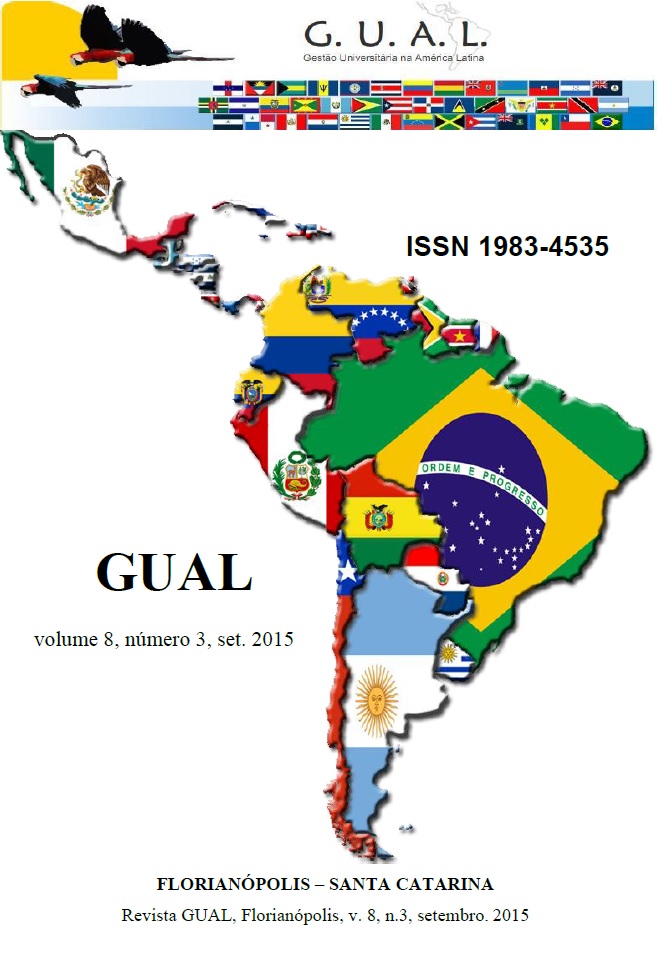Envolvimento dos alunos do curso de Graduação em Administração: aplicação de escala multidimensional
DOI:
https://doi.org/10.5007/1983-4535.2015v8n3p204Resumo
Dos mais de sete milhões de universitários dos cursos de graduação no Brasil, mais de 18% optam pelo curso de Administração. Em meio à concorrência dos cursos de graduação em Administração, o envolvimento individual do aluno interfere no processo de formação do profissional. Desta forma, o objetivo deste estudo é estudar o envolvimento dos alunos de Administração sob as dimensões que interferem no processo de aprendizagem, sendo elas: cognitiva, afetiva, comportamental e agenciativa relatadas por Veiga (2013). O estudo acontece em três diferentes instituições que oferecem ensino superior em Administração na cidade de Caxias do Sul, o que torna possível a comparação do envolvimento dos alunos em diferentes instituições de ensino superior em Administração. O estudo quantitativo descritivo, contou com uma amostra total de 137 respondentes para a realização da análise estatística, na qual concluiu que em três das quatro dimensões analisadas apresentaram diferenças significativas entre as instituições analisadas. A dimensão agenciativa, na qual o aluno busca enriquecer o aprendizado de forma intencional e proativa foi a que apresentou a maior divergência entre as instituições.
Downloads
Publicado
Edição
Seção
Licença
O autor transfere todos os direitos autorais do artigo para a Revista Gestão Universitária na América Latina - GUAL, sendo vedada qualquer reprodução, total ou parcial, em qualquer meio de divulgação, impresso ou eletrônico, sem que a prévia e necessária autorização seja solicitada e, se obtida, fará constar o competente registro e agradecimento à Revista.
Os artigos publicados neste periódico estão sob licença: Attribution-NonCommercial-NoDerivatives 4.0 International (CC BY-NC-ND 4.0).



